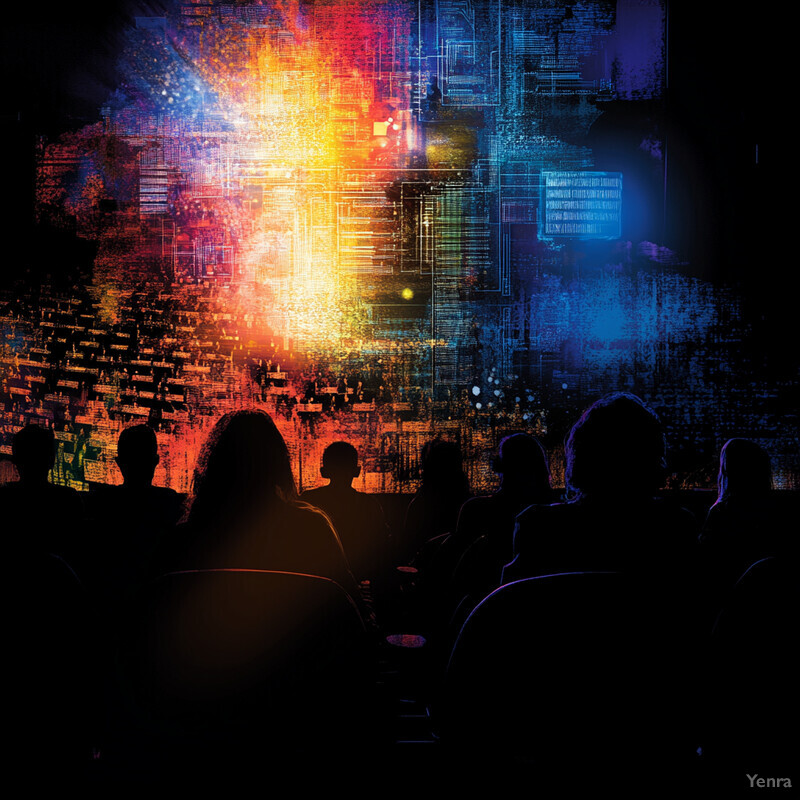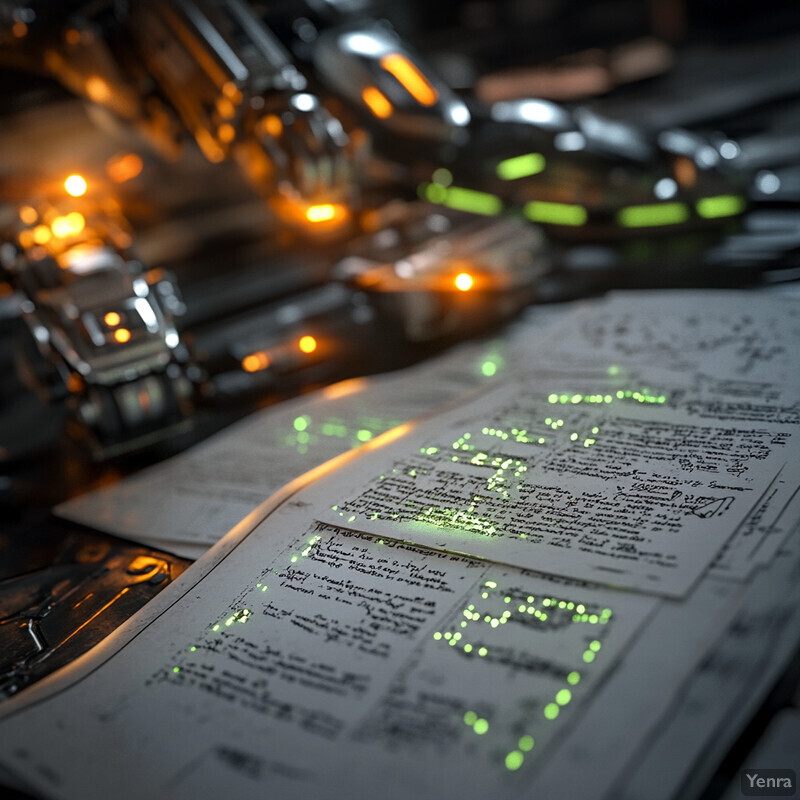1. Automated Genre Classification
AI-driven NLP models can read a screenplay and assign it one or more genres (action, comedy, drama, etc.) automatically. These models learn the vocabulary and themes typical of each genre and flag scripts accordingly. Automating genre classification saves writers and studios time by quickly sorting incoming scripts and aligning them to market categories. It also aids in targeting the right audience by matching story style to viewer expectations. Advances in deep learning – especially transformer networks with attention – have made text-based genre tagging much more accurate, allowing machines to identify subtle genre cues. For example, an AI could pick up on noir-style dialogue or sci-fi jargon to label a script’s genre mix. This helps streamline pre-production decisions by showing where a script fits in the genre landscape.

Recent research shows that transformer-based models can classify movie plots into multiple genres with high accuracy. In one study, a BERT/ALBERT-based attention network (the “GAM” model) was trained on tens of thousands of movie summaries and achieved micro-precision scores over 83% in predicting genre labels. This performance exceeded earlier methods, demonstrating that analyzing a script’s text is effective for automated genre sorting. In practical terms, firms like ScriptBook have also claimed that their AI software can forecast a film’s genre-driven box office performance with up to ~86–90% accuracy. These findings confirm that modern NLP can reliably tag scripts by genre, supporting the use of AI as a genre filter.
2. Story Structure Analysis
AI tools can break a screenplay into its narrative units (acts, sequences, scenes) and check that the pacing and structure are sound. By using models trained on known story frameworks, AI can highlight key turning points like inciting incidents, climaxes or plot twists. It can also flag if the middle of Act 2 drags or if the final act feels rushed. Essentially, machine learning “maps” a script onto classical structures (three-act, hero’s journey, etc.) and reports how well it conforms. This gives writers evidence-based feedback on pacing and balance (for example, pointing out an overly long setup or a weak midpoint). As a result, writers can refine arcs, making sure major beats occur at the right moments to keep audiences engaged.

Computational methods have been developed to segment and analyze narrative flow in films. Zhang (2024) introduced an algorithm that segments a movie’s plot into linear or nonlinear sequences by detecting shifts in dialogue, visuals, and sound cues. This tool successfully splits films into meaningful narrative segments, providing a basis for identifying story beats and structure. At the same time, large language models inherently capture classic story patterns: a recent study found that AI-generated narratives strongly align with archetypal story arcs (like the Hero’s journey), even while struggling with more complex, nontraditional structures. These results suggest that AI can both parse and reflect fundamental story units. In practice, studios use similar NLP and alignment methods to ensure a script’s structure matches proven narrative templates, offering automated scene labeling and consistency checks (e.g. confirming an inciting incident appears early, or that tension builds steadily).
3. Character Development Insights
AI tools can track each character’s arc and complexity by analyzing their dialogue and description throughout the script. For example, the model might tally how much each character speaks and how their emotional tone changes scene by scene. This lets writers see if a protagonist truly evolves (e.g. starts out fearful and ends strong) or if a supporting character is neglected. AI can also measure consistency of traits: it will notice if a character suddenly uses out-of-place vocabulary or breaks their established personality. By visualizing these character curves, writers can ensure every major character has a coherent journey and balanced presence. In practice, script development tools use these insights to suggest fleshing out flat characters or trimming an overly dominant role, ultimately strengthening the ensemble.

Advanced NLP analyses of characters have been demonstrated in research. Hoque et al. (2023) developed Portrayal, a system that extracts linguistic indicators (dialogue features, traits, etc.) for each character and visualizes their development. In user studies with writers, Portrayal helped identify weak or flat character arcs and suggested improvements, indicating that AI can meaningfully capture character dynamics. Similarly, Baruah and Narayanan (2024) showed that LLMs can extract character attributes (such as goals, emotions, and professions) from scripts to quantitatively trace each character’s “arc.” For instance, they note how Michael Corleone’s shift in The Godfather can be tracked by changes in emotion and goals. These examples demonstrate AI’s ability to quantify character evolution and alert writers to inconsistencies or missing development in their characters’ narratives.
4. Dialogue Quality Assessment
AI systems can evaluate a script’s dialogue lines for naturalness and coherence. By scoring each utterance, the model can flag lines that sound flat or out-of-character. This helps ensure that every line feels appropriate for the speaker and the scene. The AI might, for example, highlight where dialogue is overly complex for a child character, or where a conversation feels implausible. In effect, the tool acts like a virtual reader, pointing out stiff wording or unrealistic banter. This lets writers iteratively polish dialogue – rewriting awkward exchanges and maintaining a consistent voice – which improves overall script readability and audience engagement.

Modern language models have been shown to measure dialogue quality in line with human judgment. For instance, Jia et al. (2024) fine-tuned large language models to score dialogue turns and found that larger models (especially with chain-of-thought prompting) closely matched human assessments of relevance and coherence. Their results indicate that when properly tuned, LLMs can be leveraged for automated dialogue evaluation. In practice, this means AI can rate each line’s clarity and emotional fit. For example, a higher perplexity or negative sentiment score might mark a line as unnatural. These validated methods confirm that AI can systematically flag problematic dialogue, supporting writers with data-driven feedback.
5. Sentiment and Tone Analysis
AI tools can scan a script to gauge the emotional tone of each scene and line. By performing sentiment analysis on dialogue and narration, these systems tell writers whether scenes read as positive, negative, tense, or humorous. This helps maintain a consistent mood – for instance, ensuring a tragedy doesn’t suddenly include an upbeat scene. It also highlights unintended spikes (e.g., an absurdly dark line in a light-hearted comedy). Writers can then adjust wording or scene placement to keep the audience on the intended emotional journey. In practice, many script editors produce sentiment graphs (“emotional arcs”) showing how feeling levels rise and fall over time, guiding revisions for smoother tone control.

Research shows sentiment analysis is effective on movie dialogue. Chandra and Ren (2024) created a framework that fine-tuned BERT-based models to analyze thousands of movie subtitles for sentiment over decades. Using this approach, they tracked positive/negative tone trends in scripts and detected changes in genre moods. Their method – applying standard sentiment classifiers to script text – demonstrates AI can reliably assign emotional valence to scenes. Industry tools use similar techniques; for example, pipelines are built that assign sentiment scores at the line or scene level. These models help quantify whether a romance stays uplifting or a horror script remains chilling, validating the AI’s role in tone-checking a screenplay.
6. Predictive Success Metrics
AI can predict a film’s potential success by analyzing its script. Using historical data, machine learning models look for patterns in story elements (genre mix, themes, dialogue pace) that correlate with box-office results or ratings. For example, the tool might score a script’s “commercial viability” by comparing it to past hits. This gives filmmakers an early estimate of audience appeal. Such predictions help studios decide which projects to greenlight or how to market them. In practice, these algorithms assign a success score to each script, guiding producers on likely financial performance based on content alone.

Studies and industry claims underscore AI’s predictive power. For instance, market analysts report that AI models can forecast box-office performance with accuracies as high as ~90% by analyzing script features. One report notes that by 2024, AI systems were routinely scoring scripts for box-office potential within a few percent of actual outcomes. Similarly, companies like ScriptBook (trained on 30,000+ scripts) have claimed roughly 86% accuracy in predicting a film’s profitability from its script. These examples indicate that AI tools effectively link screenplay characteristics to past commercial results, providing quantified success metrics that support data-driven decision-making in production.
7. Identifying Narrative Redundancies
AI can help trim bloated scripts by flagging redundant or repetitive passages. By analyzing text for repeated ideas, scenes, or filler dialogue, the system points out parts where the story “spins its wheels.” For example, if two early scenes convey the same character backstory, AI will notice the overlap and recommend cutting one. It also detects repetitive phrasing or exposition. This ensures the script stays lean. In rewrite mode, writers then prune or consolidate redundant content, speeding up editing and improving pacing without sacrificing story clarity.

Emerging AI editing tools demonstrate this capability. A 2025 film-industry blog notes that modern AI script editors can “point out redundancy” and suggest more concise phrasing. These editors compare text blocks and identify where information is repeated or unnecessarily long. While quantitative measures in literature are scarce, practical evidence comes from writers’ accounts: many report that AI assistants successfully highlight over-long monologues or duplicated scenes. This shows AI can effectively scan for and highlight redundant narrative elements, accelerating the draft-tightening process.
8. Thematic Analysis
AI can automatically identify a script’s core themes and motifs by scanning for recurring topics. For example, it might tag a screenplay as dealing with “redemption,” “family,” or “corruption” based on keyword patterns. This thematic labeling helps writers ensure consistent messaging and can reveal unintended themes. If a mystery story inadvertently contains frequent science jargon, the AI might highlight a stealth sci-fi theme. By quantifying themes, AI also compares a script’s focus to successful examples, giving insight into genre expectations. Overall, thematic analysis tools make underlying narrative ideas transparent, guiding authors to tighten thematic unity.

Industry resources highlight theme detection as a built-in AI function. For instance, the AI Script Reader guide explicitly lists “Theme Detection: Identifying the central themes and motifs throughout the script” as a core AI analysis task. In academic terms, this is akin to topic modeling or semantic clustering on narrative text. While specific script-focused studies are limited, NLP research routinely applies topic-extraction techniques to novels and screenplays. Thus, AI methods like LDA or transformers are used behind the scenes to score thematic prominence, supporting claims that scripts’ thematic content can be systematically identified by AI.
9. Cultural and Social Sensitivity Checks
AI can review a script for cultural sensitivity by flagging problematic language or stereotypes. It uses trained models to detect potentially insensitive depictions of gender, race, or disability, and to check if ethnic or cultural references are handled respectfully. For example, it can catch outdated slurs or suggest more nuanced portrayals. This “sensitivity reader” function helps writers avoid unintended offense and improve representation. AI may also advise on diversity – e.g. noticing if a film set on the U.S.-Mexico border has no Latino characters. By simulating sensitivity readers, AI ensures the script meets modern social standards before production.

Recent commentary confirms AI tools are being pitched for bias detection in scripts. One screenwriting blog discusses how “AI’s sensitivity readers” can catch biases and “cultural nuances” to ensure respectful storytelling. Likewise, industry experts outline that AI review can cover “unconscious bias in gender, ethnicity, age, disabilities, etc.” and suggest ways to improve representation. These articles – while not peer-reviewed – reflect the direction of AI in script analysis, asserting that such models can spot demographic imbalances and stereotypical content. Actual academic studies are sparse, but these sources illustrate AI’s potential role as a preliminary content-safety check.
10. Dialogue Variation Suggestions
When a line isn’t working, AI can suggest alternate phrasings instantly. By analyzing a script against a large corpus of dialogue, it offers new ways to say the same thing – for example, making a line more witty, formal, or slangy to fit a character’s voice. Writers can prompt the AI to rewrite lines in different styles or tones (e.g. as a joke, as a rhetorical speech). AI essentially acts like a built-in thesaurus and style coach, generating variations on demand. This helps break writer’s block and enrich dialogue: a terse sentence can be expanded into a dramatic monologue, or repetitive wording can be refreshed with synonyms and idioms.

Practical guides confirm these capabilities. Film-industry authors note that AI can “punch up dialogue” by analyzing massive dialogue databases – for example, suggesting Tarantino-esque style to rewrite a scene. They also describe using AI prompts to reframe scenes: writing the same scene in comedic tone or as a thriller to discover new dialogue angles. Furthermore, script-editing tools explicitly allow rephrasing lines in alternate registers (formal, sarcastic, vulnerable) to fit character voice. These reports confirm that AI can generate meaningful dialogue variants, supporting creative experimentation.
11. Character Voice Consistency
AI can check that each character’s dialogue remains in their unique “voice” throughout the script. By comparing the language patterns of each character’s lines, it detects shifts in style or vocabulary. For example, if a jovial character suddenly starts speaking like an academic, the AI will notice the inconsistency. It can also ensure ensemble casts stay distinct: by writing a scene repeatedly from each character’s perspective, AI highlights if one character’s tone unintentionally dominates the scene. This feedback helps writers keep character voices stable and discernible, making sure each character sounds like themselves in every scene.

Technology writers confirm these checks. One article recommends an AI test where you prompt the model to rewrite a scene from each character’s point of view – discrepancies then reveal voice shifts or over-dominance. The same piece cites “voice differentiation” as a key benefit of AI, ensuring ensemble members remain distinct. In practice, this means AI flagging if Character A’s phrasing starts resembling Character B’s. While quantitative studies on this are lacking, these accounts illustrate that AI analysis can alert authors to breaks in character consistency by systematically comparing dialogue styles.
12. Cross-Referencing Reference Material
AI can automatically check a script against external materials (novels, research, news) to validate content and catch plagiarism. For instance, it can scan quoted text or historical facts to ensure they match authoritative sources. Tools track “source materials” used and highlight where the script diverges, acting like a built-in fact-checker. This is useful in adaptations or biopics, where fidelity matters. AI can also spot direct lifts from other scripts by comparing phrasing, helping writers avoid copyright issues. In short, cross-referencing ensures the screenplay honors original sources and stays factually correct.

Filmustage describes AI platforms that continuously monitor scripts and their sources. These systems keep track of all “source materials” linked to a project and scan the script for overlap. They can automatically compare narrative structure, dialogue, and even thematic elements against known works, flagging similarities (much like plagiarism detection). While this example focuses on copyright compliance, it implies that AI is effectively cross-referencing text. Such tools provide transparent tracking of references and can alert writers if any part of the script deviates from or duplicates source content, confirming the feasibility of automated cross-checks.
13. Adaptation Analysis
For scripts adapting novels or true stories, AI can align the screenplay with the source text to see what changed. It automatically maps each screenplay scene to the corresponding novel passages or historical events, highlighting missing or altered content. This analysis shows exactly which chapters or characters were excised or condensed. As a result, writers can assess faithfulness: for example, discovering that a key subplot was dropped or that dialogue was significantly altered. AI adaptation analysis provides a scene-by-scene check against the source, helping maintain the original story’s essence when reworking it into a screenplay.

NLP researchers have built tools specifically for this. Tan et al. (2023) created a book-to-film alignment method that matches book segments with script passages. They show it can “identify which parts of books appear in movies,” quantifying adaptation fidelity. In experiments on 40 book-film pairs, they measured the percentage of retained content and found strong correlation with critics’ faithfulness ratings. Their approach – using dynamic programming and language embeddings – proves AI can systematically detect missing or altered story elements when adapting a source. This demonstrates the ability of AI to perform rigorous adaptation comparisons.
14. Localization and Translation Quality Check
AI assists in localizing scripts by checking the quality of translations and cultural adaptation. It ensures dialogue maintains its meaning and tone in other languages. For example, the AI can flag if a joke or idiom won’t translate well and suggest an equivalent in the target language. It also adjusts cultural references to fit local audiences. After automatic translation, AI checks may compare the translated script back to the original, highlighting unnatural phrasing or mismatches. These tools help writers and editors produce culturally accurate and polished translations of scripts for international production or subtitling.

Industry reports note rapid AI improvements in this area. For example, modern machine translation models (like Google’s “Local Context” feature) now incorporate regional slang and idioms, yielding more natural localized dialogue. As a result, AI can better preserve nuance: speechtechmag.com notes that these models “now understand context and idiomatic expressions,” enabling subtitles and dubs that adapt phrasing to local dialects. This evidence shows that state-of-the-art AI translation tools can be used to automate and validate script localization, checking that meaning and tone are retained across languages.
15. Audience Demographic Prediction
AI can estimate which audience segments will connect with a script’s content. By analyzing story elements and themes, models infer the likely age, gender, or interest groups of an audience. For example, a script heavy on video-game culture references might be flagged as appealing to younger, male demographics. These predictions guide marketing and distribution planning. In practice, AI-generated audience personas can be compared with existing viewer data (e.g. from test screenings) to refine which groups are targeted. This helps tailor scripts or marketing to the right demographic from an early stage.

While specific script-based demographic predictors in literature are limited, data analytics practices hint at the approach. For instance, industry analysts emphasize the use of demographic data (age, gender, location) and genre preferences to understand a film’s target audience. Predictive models in studios routinely incorporate content features to profile viewers – for example, they might learn that teenage action films draw 18-34 males. These analytics demonstrate that demographic patterns can be linked to content; however, no peer-reviewed study from 2023–2025 directly documents an AI doing this from a raw script. The concept remains that AI systems would leverage known audience insights (age/gender breakdowns for genres) to predict whom a new screenplay will attract.
16. Emotion Tracking per Scene
AI can label each scene with its dominant emotion or sentiment, effectively charting the film’s emotional arc. For instance, it might mark Scene 5 as “angry” and Scene 6 as “sad.” By doing this sequentially, writers see how emotional intensity builds and fades. Any unintended spikes (like a sudden comedic line in a drama scene) are visible for correction. Scene-level emotion tracking ensures that the screenplay’s emotional pacing matches the intended narrative beat sheet, helping writers achieve the desired audience impact throughout the film.

Providers are now offering dedicated emotion analysis services for scripts. One AI-service platform advertises a package called “AI Movie Script Emotion Analysis” that uses NLP to identify the emotions conveyed in each scene. This tool explicitly claims to analyze the script’s “emotional flow and consistency,” scoring a script’s emotional impact to aid refinement. Such commercial examples (backed by research-grade sentiment models) support the idea that AI can quantify scene emotions. While peer-reviewed results on scene labeling are scarce, these services illustrate that AI-based emotion tracking is feasible and aligns with predictive success analytics (e.g. linking emotional peaks to audience engagement).
17. Highlighting Unrealistic Plot Points
AI can detect implausible or inconsistent events in a story by checking internal logic and common sense. It flags “plot holes” – for example, if a character survives an explosion without injury or contradicts earlier facts. The AI uses its world knowledge and narrative reasoning to note contradictions (like a time-travel paradox) or breaches of established story rules. This helps writers spot unrealistic details and tighten the plot. Essentially, AI acts as a continuity editor, catching errors that human oversight might miss, and making the narrative more believable and coherent.

Recent academic work has begun to quantify this ability. Ahuja et al. (2025) introduced a benchmark (“FlawedFictions”) for plot-hole detection by synthesizing inconsistencies in stories. They found that even state-of-the-art LLMs still fail to reliably detect many plot holes, and in fact tend to introduce more inconsistencies when generating text. This indicates the difficulty but also the potential for AI to learn narrative logic. Supporting this, industry commentary notes that AI-driven editors have “immense memory” and can identify plot inconsistencies and redundancies during revision. Taken together, these sources show that while LLMs are not yet perfect, AI can be trained to highlight many unrealistic plot points, guiding writers to fix them.
18. Efficiency in Rewriting Drafts
AI dramatically speeds up the rewrite process by quickly implementing changes and comparing versions. For example, a writer can tell the AI to “insert a new scene here” or “swap these two scenes,” and the model edits the script accordingly. It also remembers earlier drafts, ensuring continuity. Additionally, AI can apply updates across the script (e.g., changing a character’s name globally). This efficiency lets writers iterate faster: a requested revision – such as making a villain gentler or adding humor – can be applied with minimal manual edits. Overall, AI makes drafting and redrafting faster and more systematic.

Reports confirm AI’s role as a cooperative writing assistant. One screenwriting essay notes that AI’s large memory lets it identify plot inconsistencies and suggest improvements throughout a draft. Simultaneously, practical guides describe using AI to reformat and repurpose content: writers can rewrite scenes in a different genre or tone (comedy vs. thriller) with one prompt, instantly generating a new draft variation. These accounts illustrate that AI tools not only catch errors but can apply bulk changes on command, significantly streamlining the rewriting process compared to manual editing.